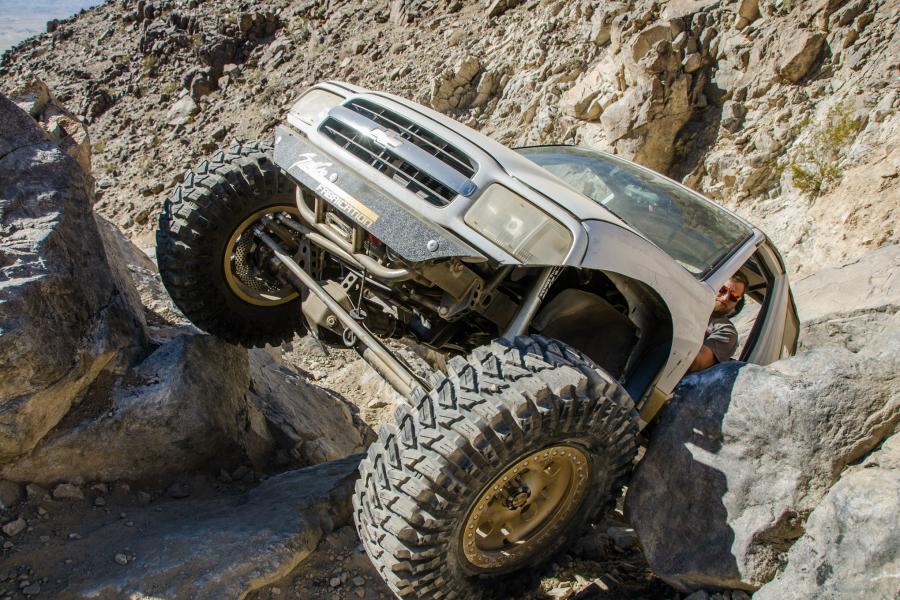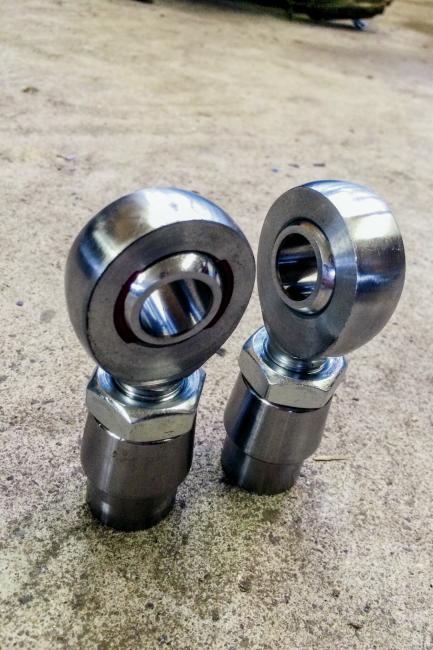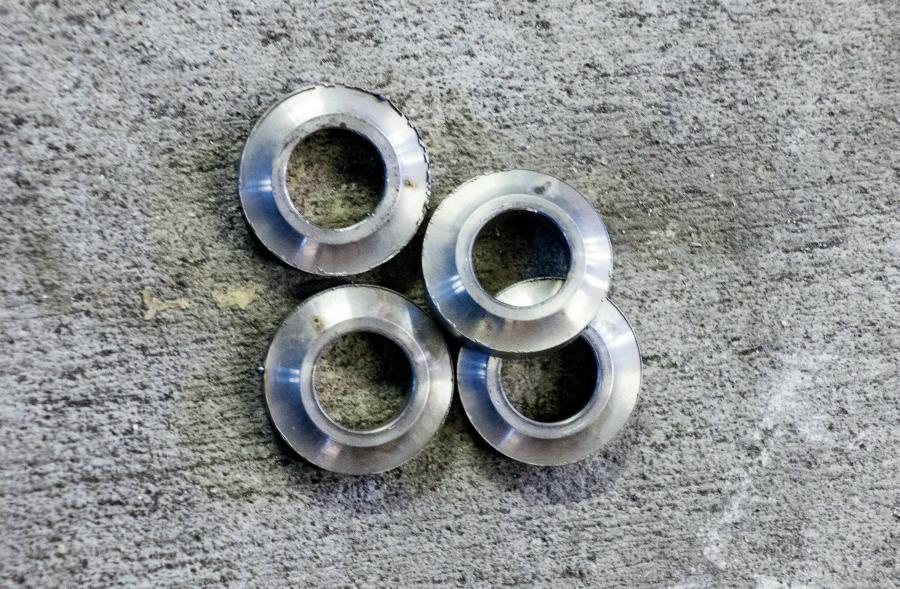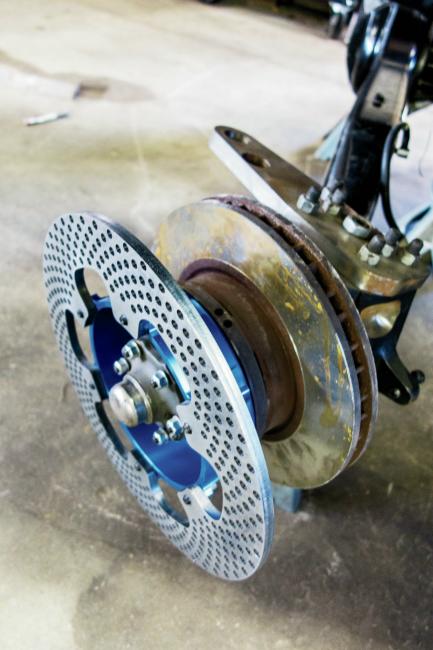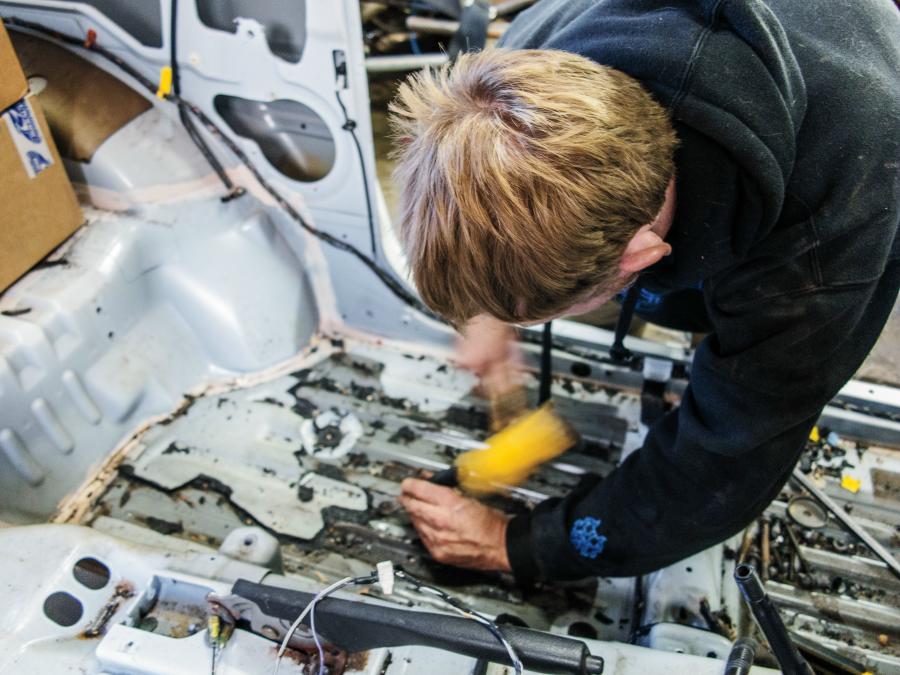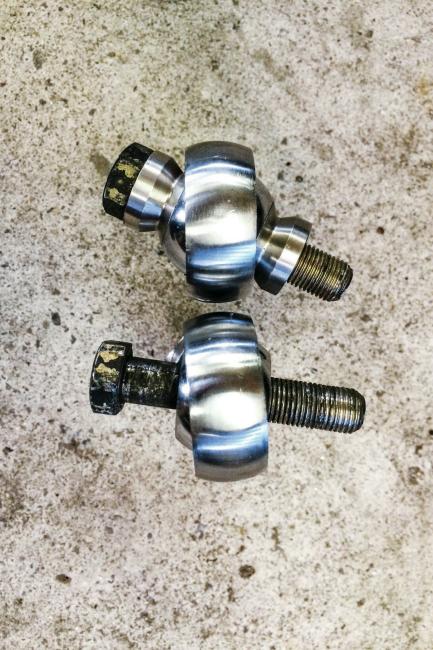![]()
In 2017, 4Wheel & Off-Road Magazine took a 2001 Chevy Tracker, and set out to build a light weight rockcrawler. The bone stock Tracker started out looking like something someones daughter drove to high school.
![]()
Building a vehicle with limited aftermarket support gives you the opportunity to stand out from the crowd. It also raises a few eyebrows when you embarrass someone with all of the latest bolt-on components in a vehicle that looks like it should be driven to the beach by a sorority girl. The tradeoff, of course, is that constructing a vehicle with no aftermarket support means that every component has to be fabricated from scratch. This is neither quick nor inexpensive, but the low buy-in price of the Tracker offsets much of that bill when you add up the total cost.
![]()
There are more powerful engines, and lighter engines, than the 225-pound 2.0L engine in the Tracker. The engine and transmission are the only drivetrain components that will be retained. Doing so retains reliability, and keeps an already large-scale project from becoming even more expensive and time consuming. The 2.0L engine makes 130 hp and 134 lb-ft of torque in stock form.
The timing chain was replaced with a stock replacement part from RockAuto, along with new spark plugs, belts, and hoses. However, replacing the timing chain ended up doing more harm than good. The dowel on the exhaust cam was not aligned when it was torqued down, and when it loosened, the pistons came crashing into the exhaust valves.
![]()
New framerails were made out of 0.093-wall, 2×4-inch box tubing, and provide a clean slate to add a steering box, ADS air shocks, and links from Rod End Supply.
![]()
There are a lot of great transfer case options on the market, from the Advance Adapters Atlas II to Dana 300s and Toyota transfer cases. None of them are nearly as light as the 52-pound Samurai transfer case ordered from Trail Tough. The 6.4:1 Trail Tough Rockmonster gears offer the gear reduction needed, and they even lower the high range ratio by 17 percent, effectively turning the 5.29 Nitro gears into 6.19s.
![]()
The front Diamond axle uses a Toyota 80 series high-pinion third member and electronically activated locker with 5.29 Nitro gears. The 80 Series Land Cruiser axles come with drive flanges, but they were swapped to Aisin manual hubs.
![]()
The front suspension uses a three-link configuration with a track bar. The lower links locate the axle, the upper link keeps the front axle from rotating, and the track bar locates it side-to-side. With a parallel track bar and draglink, this configuration provides plenty of articulation with very few compromises.
![]()
The front shock hoops were constructed from 1-1/2″ x 0.095″ wall DOM tubing and tie together with a simple 1-inch crossover tube for strength and rigidity. No need for tube clamps, Jesse Haines Fabrication simply put a threaded bung in each end to make the tube removable to access the engine.
![]()
The rear uses another Diamond axle fitted with a Toyota electric locker, 5.29 Nitro gears, and Spidertrax lightweight brakes. This application uses an offset differential to match the output of the Samurai transfer case, so custom axleshafts are necessary. Diamond used Ford 9-inch big bearing housing ends that allowed them to source custom axleshafts from a variety of sources.
![]()
The rear suspension, like the front, uses a three-link with a track bar. The upper mount sees a tremendous amount of rotational force, so it was tied into multiple crossmembers. The offset Samurai transfer case from Trail Tough allows the upper link to be centered in the chassis.
![]()
Simple tubular shock mounts were built for the rear pair of ADS 2-1/2 inch-diameter, 12-inch-travel air shocks. Note how the shocks are mounted as wide as possible to increase stability. The air shocks are tilted in at ride height. This positions the shock perpendicular to the axle at full extension, not over center where the spring rate becomes digressive.
![]()
The axles were capped by 37-inch Maxxis Trepador tires mounted on great-looking KMC Enduro beadlocks. Mounting the tires up was more difficult than past beadlocks they have installed, but they attribute this to the strong, stiff bias-ply sidewalls on the Maxxis tires.
![]()
CR Fab crafted the rear sheetmetal from 0.040-inch aluminum with over 600 bucking rivets holding the panels together. The bead-rolled panels not only look sharp, but the 3D shape adds strength as well.
![]()
Jon Conner at CR Fabrication crafted the amazing dash and rear panels that would make an airplane jealous, and then upped the game with these custom door panels.
![]()
The factory seats were replaced with MasterCraft Safety PWR Sport seats intended for a UTV. Only 16 pounds each, these seats are 10 pounds less than the stockers, even when loaded with optional features such as the rear map pockets to store tools and seat heaters. Seat heaters added far less weight than the 15-pound heater core that was removed.
![]()
Nothing makes a rig look like a race car quite like a dash full of Auto Meter gauges. They used the Ultra-Lite line to monitor speed, RPM, water temperature, oil pressure, voltage, and fuel level. Weighing well under a pound each for the smaller 2-1/16 inch gauges, there was no reason not to keep tabs on all these functions.
![]()
Samco built a skidplate from 1/8-inch 4130 that has better impact resistance than aluminum, yet is lighter than 3/16-inch AR plate.
![]()
There was liberal copying of Trophy Truck styling on the Tracker’s front bumper. Vic Carrasco at Samco Fabrication built the front bumper out of 1.75″ x 0.120″ wall tubing and skinned it with plastic. Behind the bumper, a 4,500 pound UTV winch can be used for recovery or to pull the chassis down to the axle for added stability.
![]()
The race car theme extends all the way to the rear of the Tracker. Austin Hall at Samco Fabrication built this tubular spare tire mount that provides a 50-50 weight balance. He pierced the tube work and sleeved it with aero tubing so the straps would not get abraded on rocks.
![]()
The stock wheelbase was a mere 87 inches, but the front end was moved forward 9 inches and the rear axle was pushed back 7 inches to produce a stable 103-inch wheelbase.
The stock 2WD tracker was weighed on a set of Proform corner scales, and weighed 2,592 pounds. Before adding the spare tire or doors, it was weighed again and came in at 2,900 pounds. That pretty impressive when you take in to account what was removed, what was fabricated, and what was added.
Links:
This Tracker was built in a 7-part series of articles. They can be difficult to find, but I have listed them here in order in the event that you want to see the entire build up, and videos that were included. Enjoy!
We Build a Lightweight Fuel-Efficient Daily Driver/Rockcrawler Chevy Tracker
We Build a Lightweight Fuel-Efficient Daily Driver/Rockcrawler Chevy Tracker – Part 2
How to Choose The Right Drivetrain – Chevy Tracker Project Part 3
How to Build a Custom Link Suspension – Tracker Project Part 4
Interior & Sheetmetal For Our Tracker Project – Part 5
Down to The Details on Our Lightweight Tracker – Part 6
Our Lightweight Tracker Hits The Trail – Part 7
Photos:
Click the photos to enlarge – click the arrows to load more.

